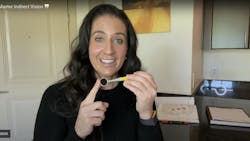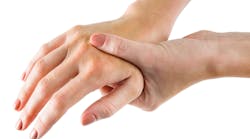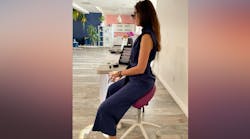New dental hygiene grads: How to properly use your mirror
If you’re a new dental hygiene grad, welcome to one of the most rewarding and physically demanding professions out there. One of the best pieces of advice I can offer you early in your career is … become comfortable with indirect vision. This was one of the hardest skills for me to learn in school. I didn’t realize until much later when I started teaching ergonomics that using a mirror requires us to use our brain in a totally different way!
If this is a challenge for you too, I get it—using a mirror to do your work feels clunky and backward. You might be tempted to lean in, twist your spine, or crane your neck for a better view. But those small adjustments add up fast. Over time, they can lead to chronic neck pain, muscle fatigue, and even career-ending musculoskeletal disorders (MSDs).
Learning indirect vision isn’t just something you were graded on; it directly impacts your health and ergonomics. When you use a mirror to view those hard-to-see surfaces, you’re able to maintain better posture, reduce neck and shoulder strain, and avoid overworking your dominant hand. You’ll feel better at the end of each day, and you’ll build habits that support a long and healthy career.
Mirror tips when you’re just starting out
- Practice every day. Give yourself a week to focus solely on mirror use. It gets easier with repetition.
- Adjust your grip. Holding your mirror closer to the head helps lower your shoulder and reduce tension. Also, using an ergonomic mirror with a wide, light handle will relax your grip.
- Be patient. Like any new skill, indirect vision takes time to feel natural. But it’s worth it!
Learn more tips for indirect vision with my tutorial.
As someone who teaches dental ergonomics every day, I’ve seen the difference this one small shift can make. My advice as a 17-year practicing hygienist and ergonomics coach is for you to take the time to learn this crucial skill. Your body will thank you!
About the Author
Stephanie Botts, BSDH, RDH, CEAS
Stephanie Botts, BSDH, RDH, CEAS, has been a clinical dental hygienist for over 17 years. She is a certified ergonomics assessment specialist providing both in-office and virtual ergonomics consulting and coaching to dental professionals. She also provides CE to dental and dental hygiene associations on ergonomics. Stephanie believes that by learning effective strategies to optimize proper ergonomics, dental professionals can practice pain-free and ensure career longevity. She can be reached at [email protected] or on Instagram at @steph.polishedposture.



